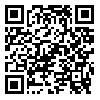Volume 11, Issue 4 (Autumn 2023)
PCP 2023, 11(4): 341-348 |
Back to browse issues page
Download citation:
BibTeX | RIS | EndNote | Medlars | ProCite | Reference Manager | RefWorks
Send citation to:



BibTeX | RIS | EndNote | Medlars | ProCite | Reference Manager | RefWorks
Send citation to:
Ghamari Kivi H, Jamshiddoust Miyanroudi F, Mousavi S, Ghavibazou E. Role of Types of Inner Speech in the Prediction of Symptoms of Anxiety, Depression, Somatization, and Distress in the Normal Population. PCP 2023; 11 (4) :341-348
URL: http://jpcp.uswr.ac.ir/article-1-878-en.html
URL: http://jpcp.uswr.ac.ir/article-1-878-en.html
1- Department of Counseling, Faculty of Educational Sciences and Psychology, Mohaghegh Ardabili University, Ardabil, Iran.
2- Department of Psychology, Faculty of Educational Sciences and Psychology, Mohaghegh Ardabili University, Ardabil, Iran. ,f.jamshiddoust@student.uma.ac.ir
3- Department of Psychology, Payame Noor University, Tehran, Iran.
4- Department of Counseling, Faculty of Education and Psychology, Alzahra University of Tehran, Tehran, Iran.
2- Department of Psychology, Faculty of Educational Sciences and Psychology, Mohaghegh Ardabili University, Ardabil, Iran. ,
3- Department of Psychology, Payame Noor University, Tehran, Iran.
4- Department of Counseling, Faculty of Education and Psychology, Alzahra University of Tehran, Tehran, Iran.
Abstract: (3056 Views)
Objective: It is extremely common for adults to use self-talk to regulate their behavior. However, the underlying processes leading to differences in inner speech are not well understood. In this study, the correlation between various forms of self-talk and symptoms of anxiety (hyperactivity), depression, sleepiness, and distress was investigated.
Methods: The research method is a descriptive correlation type. The statistical population of the study included all 10 000 students of Mohaghegh Ardabili University in Iran in the academic year of 2019-2020. A total of 378 students of Mohaghegh Ardabili University were selected through a multi-stage cluster sampling method. The varieties of the inner speech questionnaire (VISQ) and the four-dimensional symptom questionnaire (4DSQ) were administered to all subjects. Pearson correlation coefficient and stepwise multivariate regression analysis were used. Data were analyzed by SPSS software, version 23.
Results: The results showed the strongest inner speech for predicting anxiety, depression, and somatization disorders is another type of inner speech. On the other hand, in those with distress symptoms, evaluative/critical inner speech was appropriately predictive. Also, positive-regulative inner speech negatively predicts anxiety, depression, and distress. In the normal population, positive regulative inner speech is considered an appropriate predictor.
Conclusion: Consequently, probably two types of inner speech evaluation-critical and positive-regulative exist that have more powerful construct validity, and usage of other inner speech is questionable.
Coresponding author: Fatemeh Jamshiddoust Miyanroudi, E-mail: f.jamshiddoust@student.uma.ac.ir
You can also search for this author in: Google scholar
Methods: The research method is a descriptive correlation type. The statistical population of the study included all 10 000 students of Mohaghegh Ardabili University in Iran in the academic year of 2019-2020. A total of 378 students of Mohaghegh Ardabili University were selected through a multi-stage cluster sampling method. The varieties of the inner speech questionnaire (VISQ) and the four-dimensional symptom questionnaire (4DSQ) were administered to all subjects. Pearson correlation coefficient and stepwise multivariate regression analysis were used. Data were analyzed by SPSS software, version 23.
Results: The results showed the strongest inner speech for predicting anxiety, depression, and somatization disorders is another type of inner speech. On the other hand, in those with distress symptoms, evaluative/critical inner speech was appropriately predictive. Also, positive-regulative inner speech negatively predicts anxiety, depression, and distress. In the normal population, positive regulative inner speech is considered an appropriate predictor.
Conclusion: Consequently, probably two types of inner speech evaluation-critical and positive-regulative exist that have more powerful construct validity, and usage of other inner speech is questionable.
Coresponding author: Fatemeh Jamshiddoust Miyanroudi, E-mail: f.jamshiddoust@student.uma.ac.ir
You can also search for this author in: Google scholar
Type of Study: Original Research Article |
Subject:
Rehabilitation
Received: 2023/02/19 | Accepted: 2023/06/13 | Published: 2023/10/28
Received: 2023/02/19 | Accepted: 2023/06/13 | Published: 2023/10/28
| Rights and permissions | |
 |
This work is licensed under a Creative Commons Attribution-NonCommercial 4.0 International License. |








